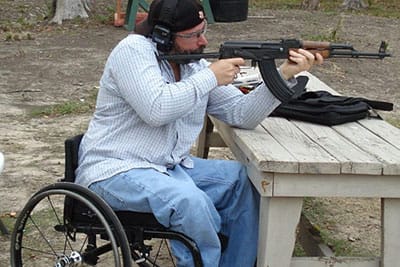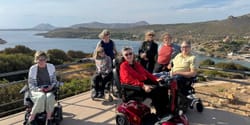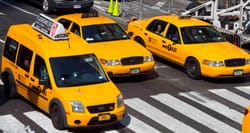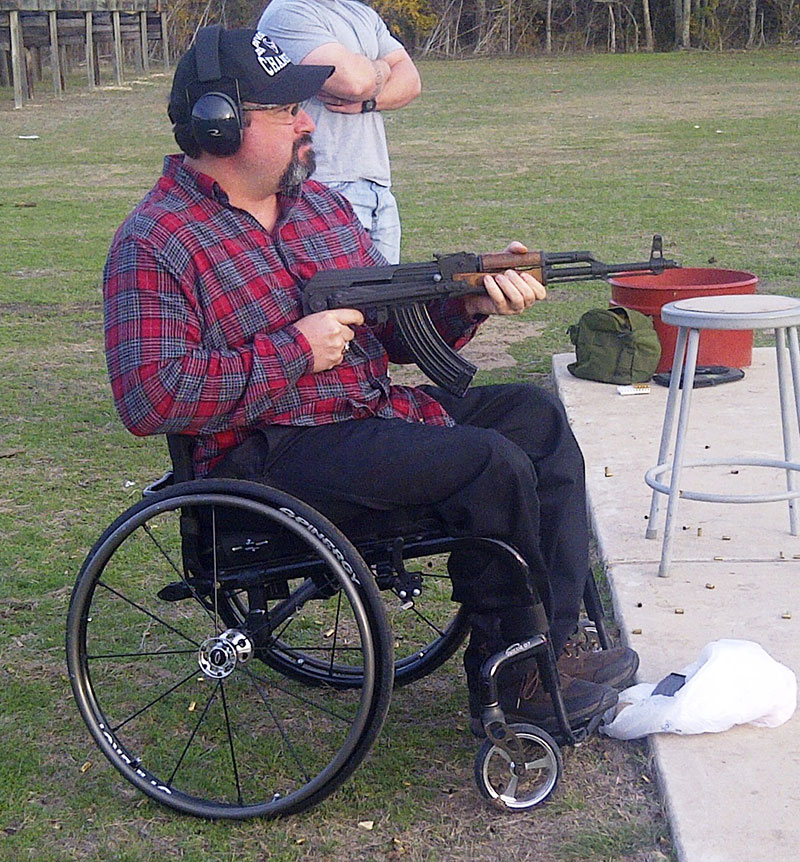
If you’re in Houston, Texas, and you want to shoot off a few rounds with your favorite handgun or rifle, there are several wheelchair-friendly gun ranges in and around the city that will be more than happy to accommodate your whim for weaponry. However, you should know what to look for to make your day at the range as enjoyable as possible.
Know the Rules
Safety is first and foremost. The number one rule of gun safety is never point your weapon at something unless you want to destroy it. This goes for loaded and unloaded weapons. And remember, “ALL GUNS ARE CONSIDERED LOADED.” It’s simply the best practice.
Before visiting a range, familiarize yourself with the state laws to ensure that you transport your weapon in a legal manner.
In Texas, open carry of rifles is legal. A rifle can be transported loaded or unloaded and in plain view or concealed in a vehicle. However, Texas maintains tight restrictions on handguns compared to other states.
If you don’t have a Texas Concealed Handgun License or a concealed license with a reciprocating state, handguns may not be carried concealed while loaded on your person unless the handgun is being transported, while en route to the gun range, to a vehicle or from your vehicle to your residence. Once in your vehicle, the handgun must be concealed and not in plain view. Under Texas law, a loaded handgun or rifle can be carried in a vehicle without a license.
The best advice is to carry your firearm in a gun case. For handguns, it is easiest to place the gun case in a backpack on your wheelchair or strapped to your back. The last thing you want is for your gun case to slide off your lap and hit the floor at the gun range.
For more information on carrying weapons in Texas, read
Section 46.02 of the Texas Penal Code.
In addition to state gun laws, individual ranges post safety rules that you will be required to sign before shooting. For an example of safety rules, visit the
Top Gun Handgun Training & Shooting Centerwebsite and view their range rules.
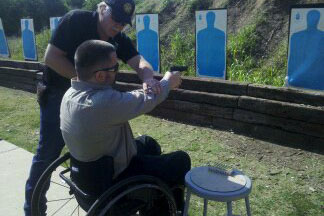
Bring the Right Equipment
You will need your “eyes” and “ears” (eye and hearing protection) before entering the range. If you do not own hearing or eye protection, most ranges will loan you glasses and muffs to get you through your session. You will also have the option to purchase them since many gun ranges double as gun supply stores.
If you forget your ammunition, you will be able to purchase that at the range as well. However, you will probably end up paying more for ammo at the range. Typically, it will cost less at a sporting goods store that sells gun supplies.
Maybe you’ve had your eye on that sleek new Smith & Wesson semiautomatic, but you aren’t sure if you would like firing it or not. Some gun ranges rent out weapons – even fully automatic guns – by the hour. Call ahead of time to your range of choice or visit their website to see what all is offered.
Outdoor vs. Indoor
While outdoor gun ranges can be enjoyed year round in southeast Texas, indoor ranges offer better accommodations for wheelchair users. Indoor ranges, such as Athena Gun Club, provide a climate-controlled, fully accessible environment that does not require you to push through grass, gravel or dirt to access the range.
Also, even though personnel at both the outdoor and indoor ranges will hang the targets for you upon request, individual lanes at indoor ranges use a motorized pulley system to send out and retrieve targets. This allows you to change the distance of the target with the flip of a switch.
Indoor pistol ranges typically go out to 25 yards while rifle ranges will go out to 100 yards. Outdoor ranges, on the other hand, may have distances in excess of 200 yards for the rifle range. However, remember that pushing a wheelchair 200+ yards out to a target and back through the grass can be difficult for those who are unaccustomed to such treks.
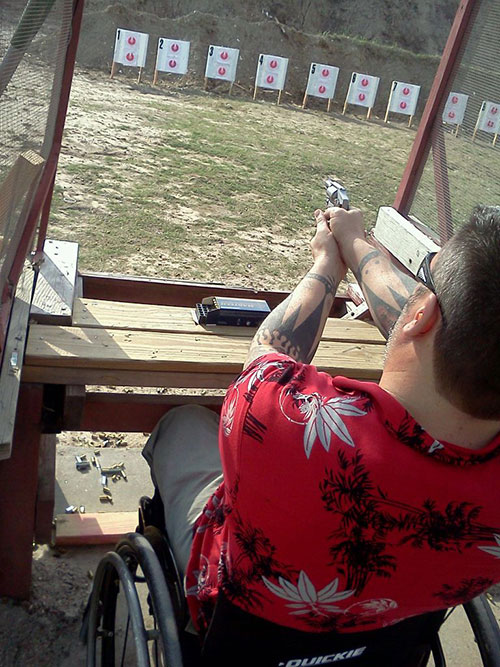
Why Go Shooting at All?
First, defending one’s life, family and property is a birthright for all Americans regardless of your physical ability. For wheelchair users, it’s even more important to be able to defend oneself against attack since we are often viewed as targets for criminal activity.
If you choose to own a gun, then you need to know how to operate it in a safe and effective manner. Going to the gun range on a regular basis can keep up your skills during live fire situations, but training should take place regularly, especially for those who have a concealed carry license and have their weapon on them daily.
For example, you can practice drawing an UNLOADED weapon from your holster. This will allow you to obtain a level of comfort handling the weapon. Placing a silhouette target on the back of your door will give you something to aim at after drawing your weapon.
Perform this ONLY when your weapon is UNLOADED. Drop the magazine and clear the chamber to make sure it is unloaded. If you do not know how to do this, refer to the owner’s manual for the weapon. Also, there are tons of helpful videos on YouTube that will teach you the basics of gun safety.
Second, shooting a gun is just plain fun. It’s an expensive sport, but an hour at the range can turn a bad day into a good day, especially when you’re shooting a rifle such as an AK47 or an AR15.
If you have an opportunity to consult with a professional, please do so. Training will help raise the level of fun and accuracy.
Whether you’re visiting a gun range in Houston or near your place of residence, keep safety your top priority. And don’t let your disability keep you from shooting. Your legs may not work, but your trigger finger works fine.
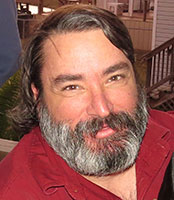
As a T-6, 10-11 paraplegic wheelchair user of more than 20 years, Bear Laird is an avid shooter and advocate for gun rights. He works as a writer in the oil and gas industry and has participated in wheelchair racing, handcycling, wheelchair basketball, wheelchair softball, Krav Maga and, more recently, bowling with a league average that will not be mentioned publicly.


